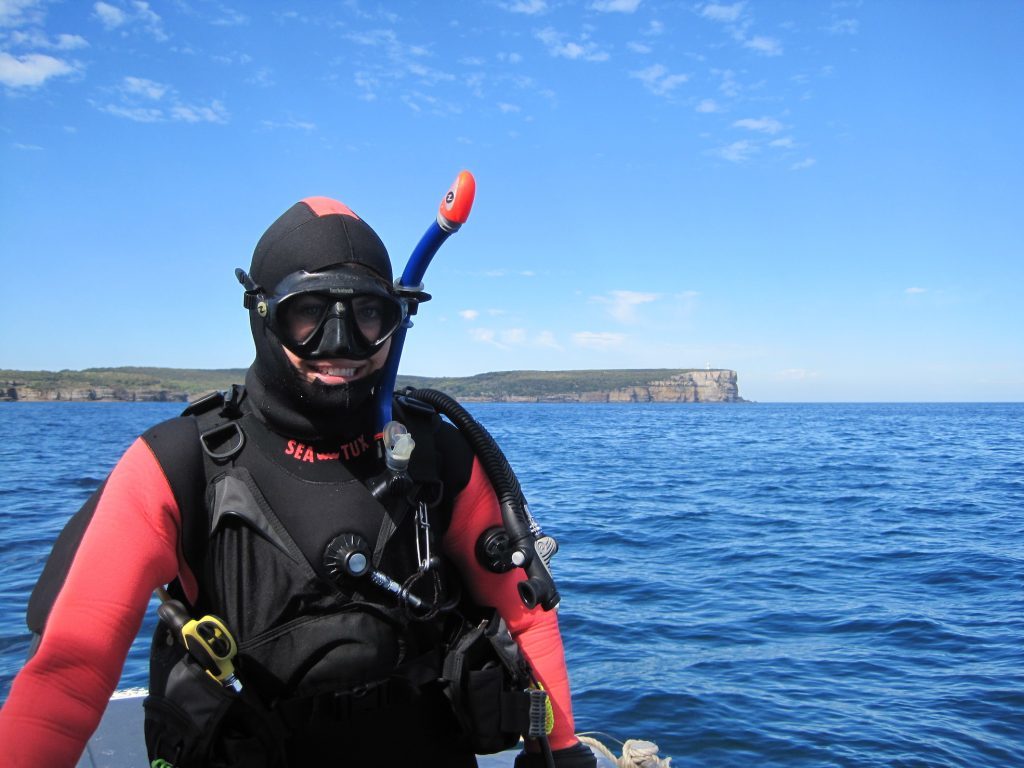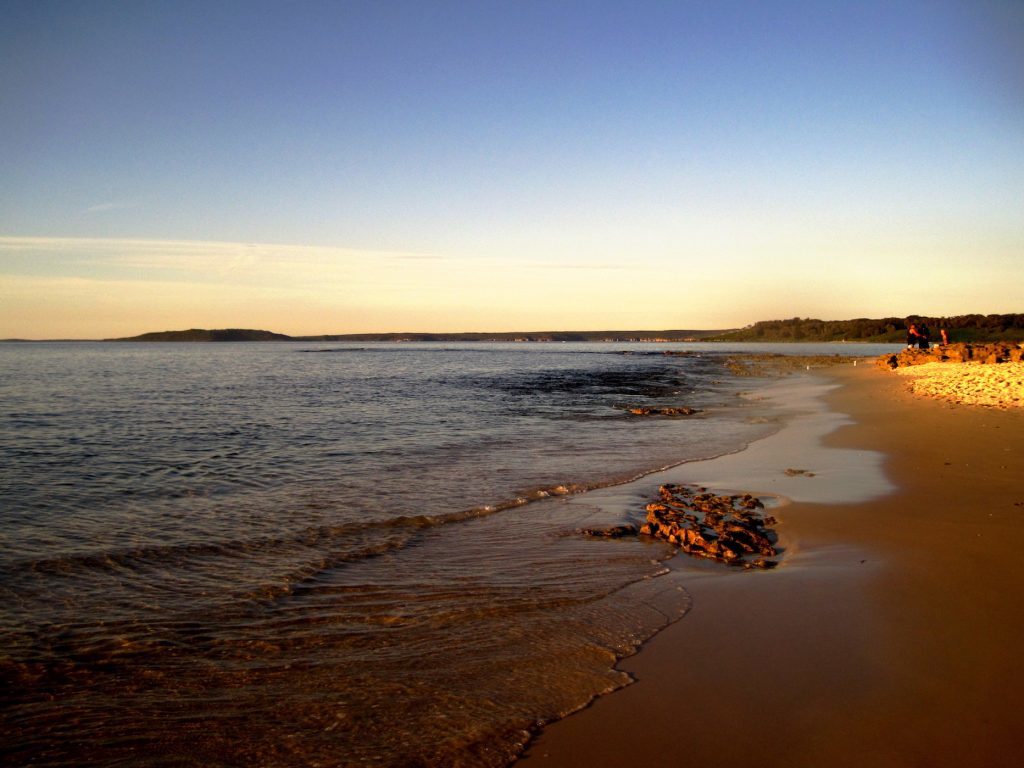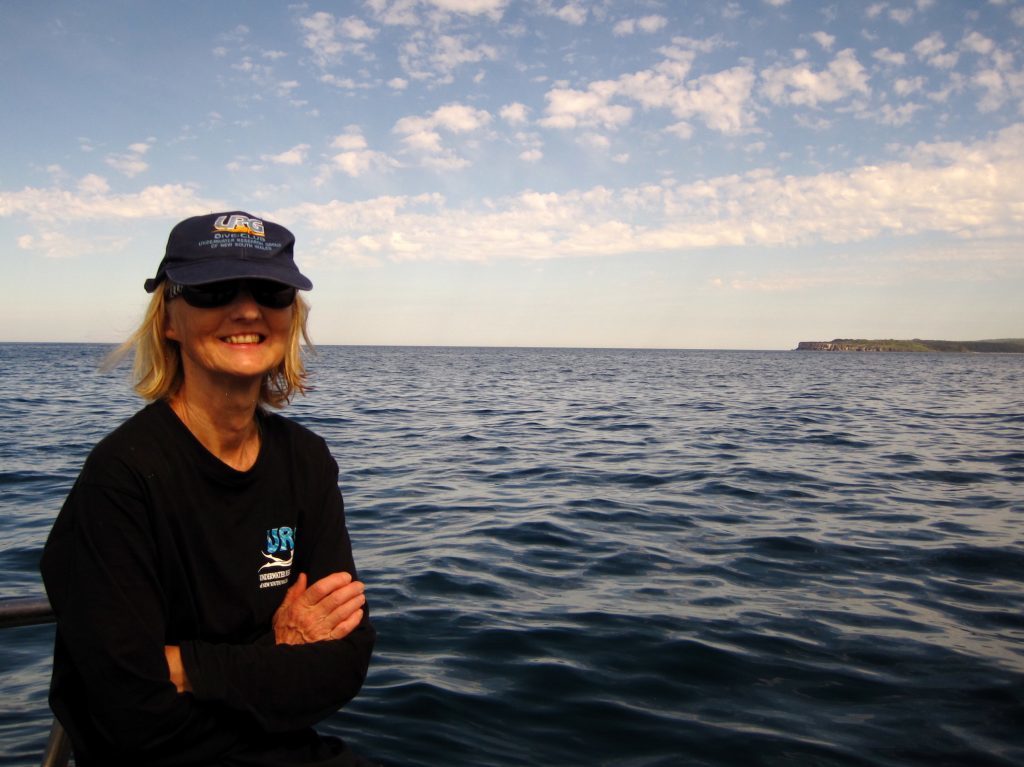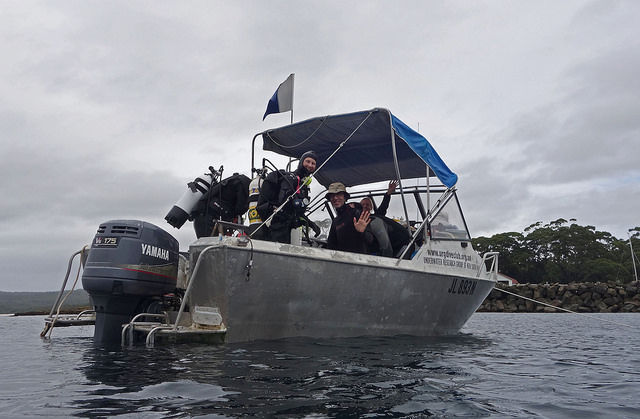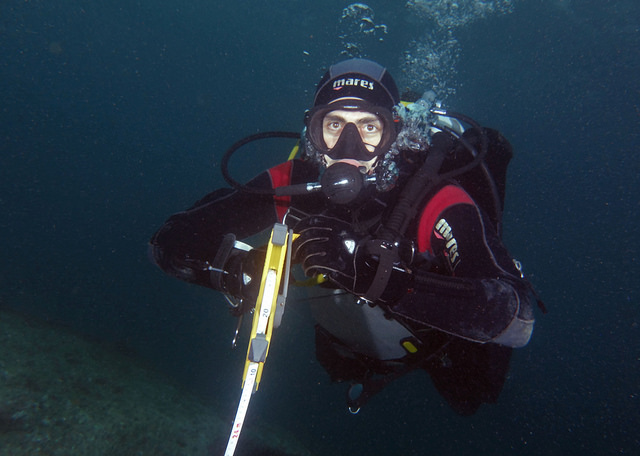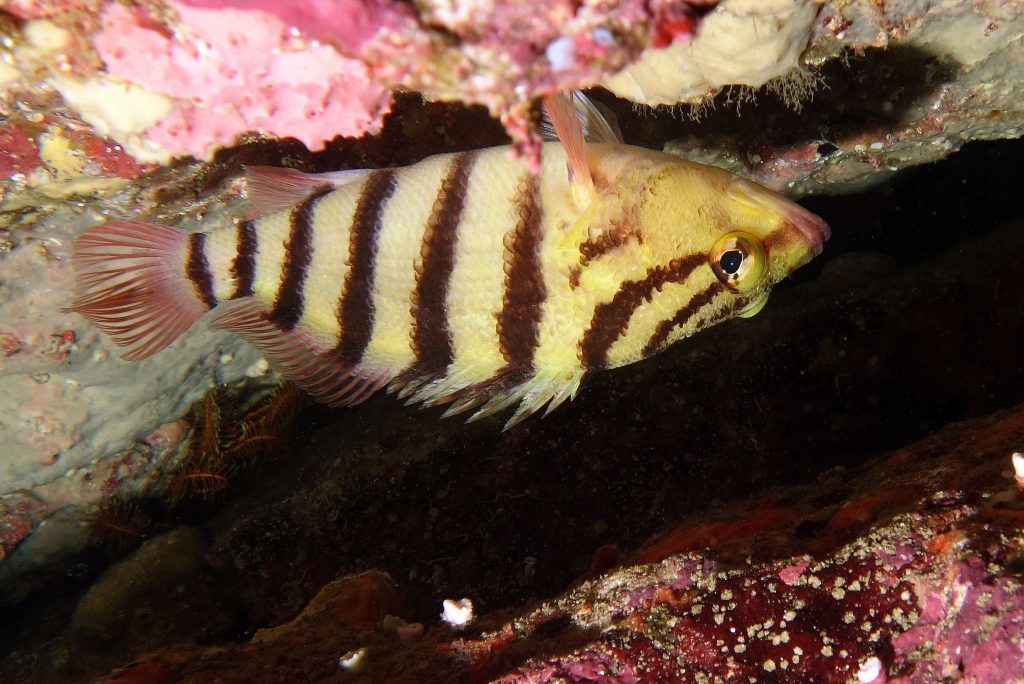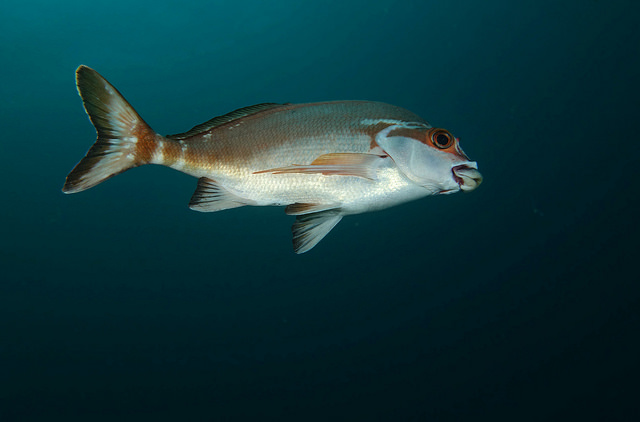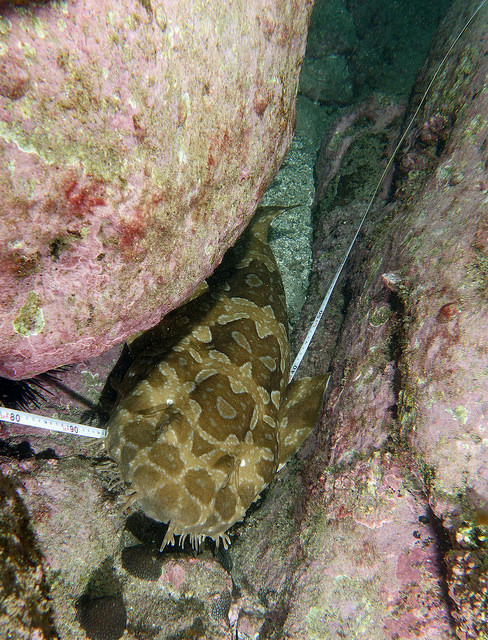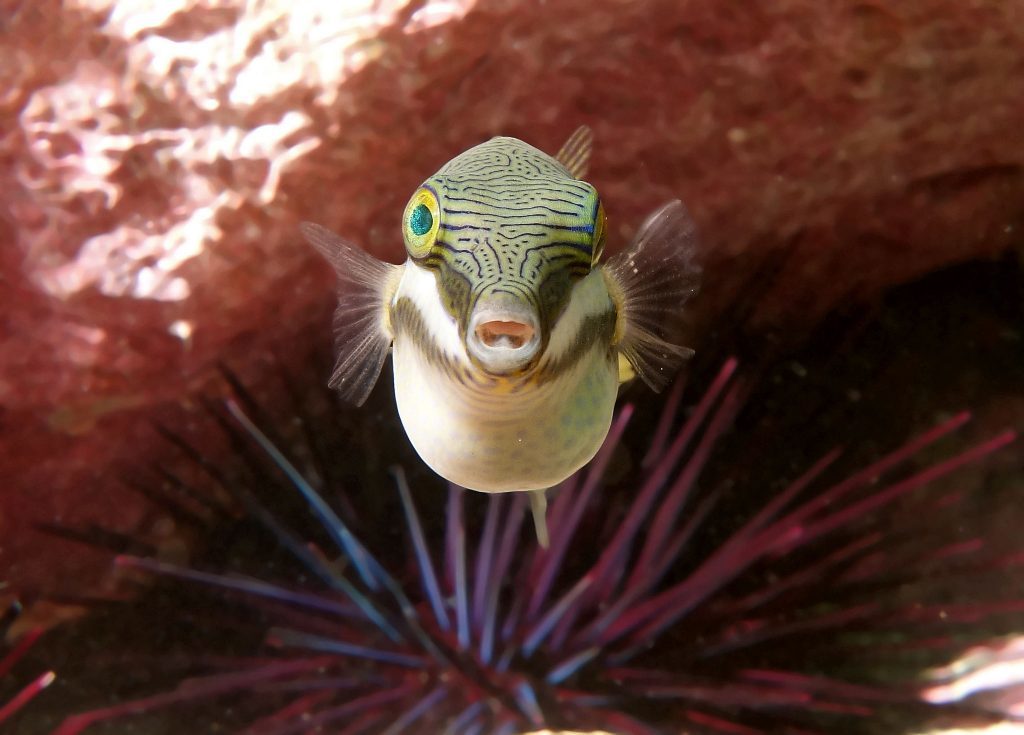Reef Life Survey volunteers have been surveying Jervis Bay Marine Park in New South Wales since 2008, continuing and filling gaps in the long-term monitoring of the marine park undertaken by the University of Tasmania and NSW Government (beginning in 1998). These surveys help document responses of the marine life to protection from fishing. For consistency with the long-term dataset, many of the sites require surveying four end-on-end 50 m RLS transects, often at both 5 m and 10 m.
John Turnbull and Andrew Green assembled a solid group to survey Jervis this year, including many of the RLS divers from the Underwater Research Group (URG) of NSW. The plan was to survey as many of the long-term monitoring sites as possible over four days, and we were hopeful of completing more sites than last year, especially considering the promising weather forecast. We had between nine and eleven divers throughout the weekend including John T, Andrew, Janet and Michael Abbott, Bill Barker, Lou de Beuzeville, David Massih, Sue Newson, Kris O’Keefe, Martin Puchert, Yanir Seroussi, and Laurel and Rowan Trebilco, as well as fantastic boat attendants, John Allen, Denise Lawler, and John Velarde who provided snacks and much appreciated support throughout the weekend. Sue’s dive shop, Crest Diving in Old Erowal Bay, became our home base for tank fills, gear washing and for sorting all the bits and pieces that were broken, lost or forgotten.
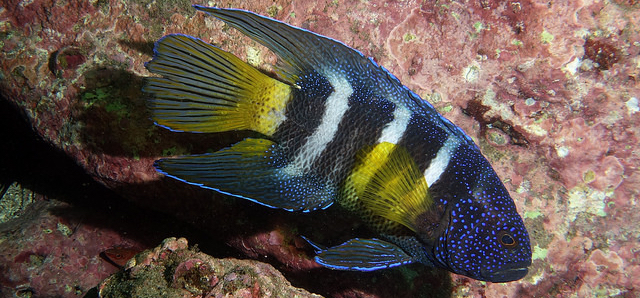
On our first day, we had planned to survey along the north end of the bay at a group-favourite site called “The Docks”. Unfortunately, the wind and swell convinced us to push-on to more protected sites. The following day we tried again. Our boat trip across the bay from Booderee National Park had been choppy, with all divers donning suits and staying under cover. But with the wind from the NW pushing on toward the other side, the Docks turned out to be a great option. Finally, there we were, sitting on the URG boat back at one our favourite NSW south coast dive sites, with flat blue water and visibility approaching 20 metres. Anchored metres from the shore, we watched the water surge up the cliff face with each swell.
We could have probably counted the fish from the boat but had a specific methodology to follow. Warm (21°C), clear water beckoned. The Docks is a fabulous dive, with a ledge-filled wall that levels off around 30 m amongst massive boulders. Most of the rock is covered in pink coralline algae, spotted with knobby, purple sea tulips (Pyura spinifera) and occasional red sea fan (Mopsella sp.). Long-spine urchin (Centrostephanus rodgersii), are common and nestled deep in burrows they have formed in the rock. Yellow and blue sponges also encrust the rocks to create a colourful backdrop for the temperate fish fauna, topped up at this time of year with some tropical species.
A large, resident Eastern blue grouper (Achoerodus viridis) greeted us at the anchor line, probably hoping we would crack open an urchin for it. Resting on top of the ledges were cryptic eastern red scorpionfish (Scorpaena jacksoniensis) and a 2.5 m banded wobbegong (Orectolobus halei).
Janet and I stopped together after completing our first 50 m transect to confirm all ok, have a short rest, change the paper over and start the second tape. The other team had run the transect line tapes along a 10 metre contour, which took us around and over a lot of large boulders and rocky reef with an area a kelp towards the end. The five-plus meter surge kept things interesting as we swung back and forth across the tape.
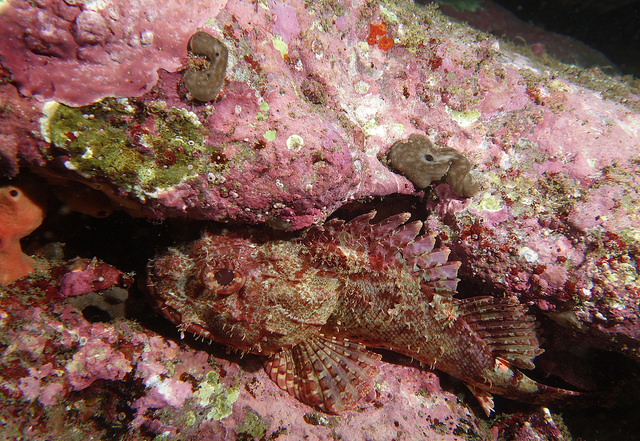
So what did we see? Without all the finer details, we saw a lot of the usual species, but also a pair of grey nurse sharks (Carcharias taurus) and a black-banded sea perch (Hypoplectrodes annulatus). The latter are only occasionally seen by divers, but looking carefully under ledges at places such as this can turn up all sorts of gems.
The excitement on the boat after such great diving was dampened slightly when we were reminded that the day was far from over. After going back to the ramp we still had a boat to wash and fuel tanks to fill, gear to unload, sort, and wash, log books to complete and of course, data to enter.
Photo organizing and data entry was mostly done around the kitchen table with beers late into the night; laptops buzzing and lots of friendly discussion on the merit of scientific names versus common names and data entry codes. In total, our efforts resulted in 79 completed transects over 17 sites.
Who said citizen science was for boring nerds? Hard work, yes, but boring, never!

